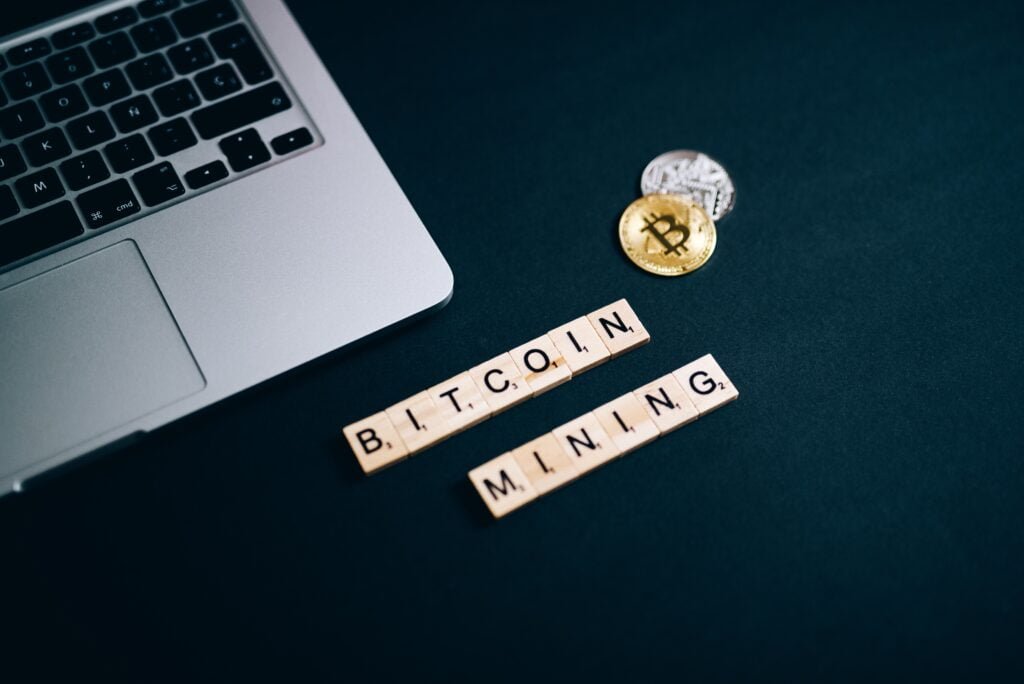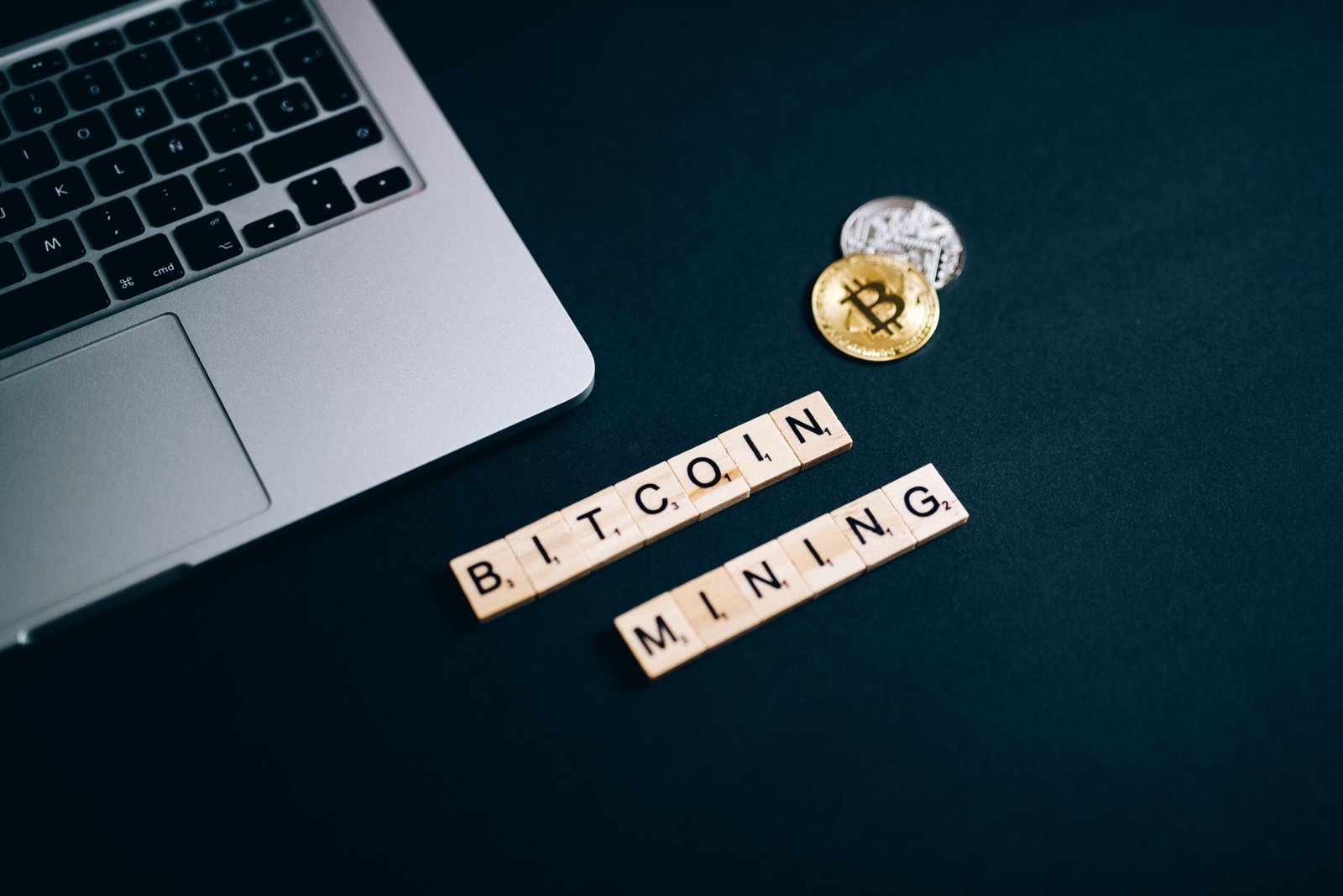Bitcoin mining is the process of creating new bitcoins and putting them into circulation. It is also how the network confirms new transactions and is an important part of the blockchain ledger’s upkeep and development. “Mining” is done with sophisticated hardware to solve a very complex computational math problem. The first computer to solve the problem receives the next block of bitcoins, and the process is restarted.

Mining cryptocurrency is time-consuming, expensive, and only occasionally profitable. Nonetheless, mining has a strong allure for many cryptocurrency investors due to the fact that miners are compensated with crypto tokens for their efforts. This could be because, like California gold prospectors in 1849, entrepreneurs see mining as a gift from God. And why not, if you are technologically inclined?
The bitcoin reward that miners receive serves as an incentive for people to help with the primary goal of mining: legitimising and monitoring Bitcoin transactions to ensure their validity. Bitcoin is a “decentralised” cryptocurrency, or one that does not rely on any central authority, such as a central bank or government, to oversee its regulation, because many users all over the world share these responsibilities.
However, before you invest the time and money, read this explanation to see if mining is truly for you.
Why Does Bitcoin Require Miners?
Blockchain “mining” is a metaphor for the computational work that network nodes do in order to earn new tokens. In reality, miners are being compensated for their work as auditors. They are in charge of determining the legitimacy of Bitcoin transactions. Satoshi Nakamoto, the creator of Bitcoin, devised this convention to keep Bitcoin users honest.
Miners help to prevent the “double-spending problem” by verifying transactions.
A case of double spending occurs when a Bitcoin owner spends the same bitcoin twice. This isn’t an issue with physical currency: when you hand someone a $20 bill to buy a bottle of vodka, you no longer have it, so there’s no risk of using that same $20 bill to buy lottery tickets next door. Though counterfeit money is possible, it is not the same as spending the same dollar twice. However, as the Investopedia dictionary defines digital currency, “there is a risk that the holder could make a copy of the digital token and send it to a merchant or another party while keeping the original.”
Assume you have one genuine $20 bill and one counterfeit $20 bill. If you tried to spend both the real and fake bills, someone who looked at the serial numbers of both bills would notice that they were the same number, indicating that one of them had to be fake. A blockchain miner does something similar: they check transactions to ensure that users have not attempted to spend the same bitcoin twice. This isn’t a perfect analogy, as we’ll explain further below.
Why to Mine Bitcoin
Blockchain “mining” is a metaphor for the computational work that network nodes do in order to earn new tokens. In reality, miners are being compensated for their work as auditors. They are in charge of determining the legitimacy of Bitcoin transactions. Satoshi Nakamoto, the creator of Bitcoin, devised this convention to keep Bitcoin users honest.
Miners help to prevent the “double-spending problem” by verifying transactions.
A case of double spending occurs when a Bitcoin owner spends the same bitcoin twice. This isn’t an issue with physical currency: when you hand someone a $20 bill to buy a bottle of vodka, you no longer have it, so there’s no risk of using that same $20 bill to buy lottery tickets next door. Though counterfeit money is possible, it is not the same as spending the same dollar twice. However, as the Investopedia dictionary defines digital currency, “there is a risk that the holder could make a copy of the digital token and send it to a merchant or another party while keeping the original.”
Assume you have one genuine $20 bill and one counterfeit $20 bill. If you tried to spend both the real and fake bills, someone who looked at the serial numbers of both bills would notice that they were the same number, indicating that one of them had to be fake. A blockchain miner does something similar: they check transactions to ensure that users have not attempted to spend the same bitcoin twice. This isn’t a perfect analogy, as we’ll explain further below.
How Much Does a Miner Make?
Every four years, the rewards for Bitcoin mining are cut in half.
When bitcoin was first mined in 2009, one block yielded 50 BTC. In 2012, this was cut in half to 25 BTC. By 2016, this had been cut in half again, to 12.5 BTC. The reward will be cut in half again on May 11, 2020, to 6.25 BTC.
As of March 2022, the price of Bitcoin was around $39,000 per bitcoin, so completing a block would have earned you $243,750 (6.25 x 39,000).
It may not appear to be a bad incentive to solve the complex hash problem described above.
You can consult the Bitcoin Clock, which updates this information in real time, to keep track of when these halvings will occur. Interestingly, the market price of Bitcoin has historically tended to correlate closely with the reduction of new coins entering circulation. This lower inflation rate increased scarcity, and historically, prices have risen in tandem.
What You’ll Need to Start Mining Bitcoins
Individuals were once able to compete for blocks with a standard at-home personal computer, but this is no longer the case. This is because the difficulty of mining Bitcoin changes over time.
The Bitcoin network aims to produce one block every 10 minutes or so to ensure that the blockchain runs smoothly and can process and verify transactions. However, if 1 million mining rigs compete to solve the hash problem, they will most likely arrive at a solution faster than if 10 mining rigs work on the same problem. As a result, Bitcoin is programmed to evaluate and adjust mining difficulty every 2,016 blocks, or roughly every two weeks.
When there is more computing power collectively working to mine for bitcoins, the difficulty level of mining increases in order to maintain a stable rate of block production. The difficulty level decreases as computing power decreases. A personal computer mining for bitcoin today will almost certainly find nothing.
Mining hardware
To mine competitively, miners must now invest in powerful computer equipment such as a graphics processing unit (GPU) or, more realistically, an application-specific integrated circuit (ASIC) (ASIC). These can cost anywhere from $500 to tens of thousands of dollars. Some miners, particularly Ethereum miners, purchase individual graphics cards as a low-cost method of assembling mining operations.
Today, almost all Bitcoin mining hardware is made up of ASIC machines, which in this case do one thing and one thing only: mine for bitcoins. Today’s ASICs are many orders of magnitude more powerful than CPUs or GPUs, and new chips are developed and deployed every few months, gaining both hashing power and energy efficiency. Today’s miners can generate nearly 200 TH/s while using only 27.5 joules per terahash.
An analogy
Assume I tell three friends that I’m thinking of a number between one and 100, and that number is written on a piece of paper and sealed in an envelope. My friends do not need to guess the exact number; they simply need to be the first to guess any number less than or equal to it. And there is no limit to the number of guesses they can get.
Assume I’m thinking about the number 19. If Friend A guesses 21, they lose because 21 is greater than 19. If Friend B guesses 16 and Friend C guesses 12, they have both arrived at viable answers due to 16 19 and 12 19. Friend B does not receive “extra credit,” despite the fact that his answer was closer to the target of 19. Consider the following scenario: I pose the “guess what number I’m thinking of” question to three friends, but I’m not thinking of a number between 1 and 100. Rather, I’m polling millions of potential miners, and I’m considering a 64-digit hexadecimal number. You can see how difficult it will be to guess the correct answer. If B and C both respond at the same time, the system fails.
Simultaneous answers are common in Bitcoin, but at the end of the day, there can only be one winning answer. When multiple simultaneous answers that are equal to or less than the target number are presented, the Bitcoin network will decide which miner to honour by a simple majority (51%).
Typically, the miner who has done the most work, or who has verified the most transactions, is the winner. The losing block is then referred to as a “orphan block.” Orphan blocks are those that have been left out of the blockchain. Miners who solve the hash problem but do not verify the most transactions do not receive bitcoin.
What Exactly Are Mining Pools?
The miner who solves the puzzle first receives the mining rewards, and the probability that a participant will be the one to solve the puzzle is proportional to the total mining power on the network.
Participants with only a small portion of the mining power have a very slim chance of discovering the next block on their own. For example, a mining card costing a few thousand dollars would represent less than 0.001% of the network’s mining power. With such a low chance of finding the next block, it could be a long time before that miner finds one, and the increasing difficulty makes matters worse. The miner’s investment may never be repaid. Mining pools are the solution to this problem.
Mining pools are third-party organizations that coordinate groups of miners. Miners can get a steady flow of bitcoin from the day they activate their miners by working together in a pool and sharing the payouts among all participants. Blockchain.info has statistics on some of the mining pools.
A Bitcoin Mining Pickaxe Strategy
As previously stated, the simplest way to obtain Bitcoin is to simply purchase it on one of the numerous Bitcoin exchanges. Alternatively, you can use the “pickaxe strategy.” This is based on the old adage that during the 1849 California Gold Rush, the smart investment was to make pickaxes rather than pan for gold.
Invest in the companies that make those pickaxes, to put it another way. In the context of cryptocurrency, the pickaxe equivalent would be a company that manufactures Bitcoin mining equipment. Instead, you could look into companies that manufacture ASIC equipment or GPUs.
Mining’s Drawbacks
Mining risks are frequently financial and regulatory in nature. As previously stated, Bitcoin mining, and mining in general, is a financial risk because one could invest hundreds or thousands of dollars in mining equipment only to see no return on their investment. However, by joining mining pools, this risk can be reduced. If you are thinking about mining but live in an area where it is prohibited, you should think twice. Before investing in mining equipment, you should also research your country’s regulations and general sentiment toward cryptocurrency.
Another potential risk associated with the growth of Bitcoin mining (and other PoW systems) is the increased energy consumption required by the computer systems running the mining algorithms. Though ASIC chip microchip efficiency has increased dramatically, network growth is outpacing technological progress. As a result, there are concerns about the environmental impact and carbon footprint of Bitcoin mining.
However, there are efforts underway to mitigate this negative externality by pursuing cleaner and greener energy sources for mining operations (such as geothermal or solar sources) and utilising carbon offset credits. Switching to less energy-intensive consensus mechanisms, such as proof-of-stake (PoS), which Ethereum has adopted, is another option; however, PoS has its own set of drawbacks and inefficiencies, such as incentivizing hoarding rather than using coins and the risk of centralization of consensus control.
Why Is It Necessary to Mine Bitcoins?
Because they are entirely digital records, there is a possibility of copying, counterfeiting, or spending the same coin twice. Mining solves these issues by making it extremely costly and resource-intensive to attempt one of these things or otherwise “hack” the network. Indeed, joining the network as a miner is far more cost-effective than attempting to undermine it.
How Does Mining Confirm Transactions?
Mining, in addition to introducing new BTC into circulation, plays an important role in confirming and validating new transactions on the Bitcoin blockchain. This is significant because there is no central authority determining which transactions are valid and which are not, such as a bank, court, government, or anything else. Instead, through proof of work, the mining process achieves decentralised consensus (PoW).
Why does mining consume so much electricity?
Anyone could run a mining programme from their PC or laptop in the early days of Bitcoin. However, as the network grew in size and more people became interested in mining, the mining algorithm became more difficult to implement. This is because the Bitcoin code aims to find a new block every 10 minutes on average.
With more miners involved, the chances of someone solving the right hash faster increase, and thus the difficulty of restoring the 10-minute goal increases. Consider how many thousands, if not millions, more times that mining power joins the network. That’s a lot of new machines drawing power.
Is it legal to mine bitcoin?
The legality of Bitcoin mining is entirely dependent on your geographical location. The concept of Bitcoin has the potential to undermine fiat currency dominance and government control over financial markets. As a result, Bitcoin is completely illegal in some places.
Bitcoin ownership and mining are legal in a growing number of countries. Algeria, Egypt, Morocco, Bolivia, Ecuador, Nepal, and Pakistan were among the countries where it was illegal, according to a 2018 report.
Other countries that have banned Bitcoin mining since 2018 include Bangladesh, China, the Dominican Republic, North Macedonia, Qatar, and Vietnam.
Overall, Bitcoin use and mining are still legal in most parts of the world.
Is Crypto Mining Harmful to Your GPU/Computer?
Because blockchain mining requires a lot of resources, it can put a lot of strain on your GPU or other mining hardware. It is not uncommon for GPUs to blow up or mining rigs to burst into flames.
However, it is generally safe to keep your rigs running at a moderate speed and with enough power supplied.
Is It Possible to Mine Bitcoin on an iPhone?
No. Bitcoin mining today necessitates massive amounts of computing power and electricity in order to compete. Running a miner on a mobile device, even if it is part of a mining pool, is unlikely to yield any profits.
Conclusion
Bitcoin “mining” is essential for validating and confirming new transactions to the blockchain and preventing bad actors from double-spending. It is also the method by which new bitcoins are added to the system. The task entails producing proof of work (PoW), which is inherently energy-intensive, based on a complex puzzle. This energy, on the other hand, is embodied in the value of bitcoins and the Bitcoin system, and it is responsible for keeping this decentralised system stable, secure, and trustworthy.
Disclaimer: Investing in cryptocurrencies and other Initial Coin Offerings (“ICOs”) is extremely dangerous and speculative, and this article is not a recommendation by shonali18.com or the author to do so. Because every person’s circumstance is different, a knowledgeable specialist should always be consulted before making any financial decisions. shonali18.com makes no representations or warranties about the accuracy or timeliness of the material provided on this website.

